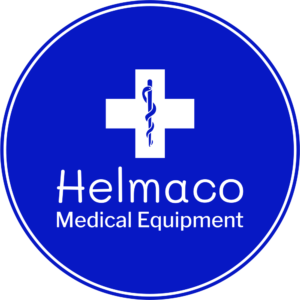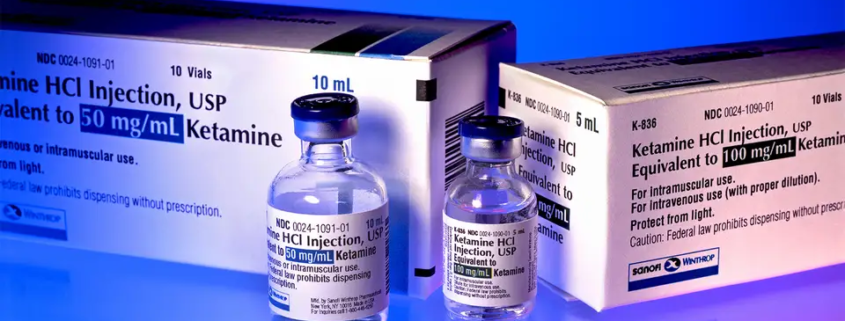Injectable Ketamine Shows Promise in Treatment-Resistant Depression
Twice-weekly subcutaneous ketamine helped alleviate symptoms of treatment-resistant depression, according to the phase III KADS study.
Among those who received at least one flexible treatment dose (0.5-0.9 mg/kg), ketamine was more than 12-times better at inducing remission of depression than the benzodiazepine midazolam (remission rate 19.6% vs 2.0%, OR 12.1, 95% CI 2.1-69.2, P=0.005), reported Colleen Loo, MD, MBBS, of the University of New South Wales in Sydney, Australia, and colleagues.
Remission was defined as a Montgomery-Åsberg Rating Scale for Depression (MADRS) score of 10 or lower at the end of a 4-week course of either treatment.
Remission according to a less stringent definition — a MADRS score of 12 or under — also favored the injectable ketamine group (22% vs 4%, P=0.007), study authors wrote in The British Journal of Psychiatryopens in a new tab or window.
In this flexible-dosed cohort, the reduction in average MADRS score by treatment end was 5.5 points (95% CI 2.1-8.7) better in the ketamine group, with significantly higher response rates based on a 50% improvement in MADRS score (29% vs 4%, P=0.001).
“For people with treatment-resistant depression — so those who have not benefitted from different modes of talk-therapy, commonly prescribed antidepressants, or electroconvulsive therapy — 20% remission is actually quite good,” said Loo in a statement. “This is a huge and very obvious difference and brings definitive evidence to the field which only had past smaller trials that compared ketamine with placebo.”
Ketamine wasn’t significantly better than midazolam when tested in a fixed-dose cohort, who only received the lower 0.5 mg/kg dose. Here, 6.3% of those on ketamine and 8.8% of those on midazolam achieved remission (OR 1.3, 95% CI 0.2-8.2, P=0.76).
Ketamine and midazolam were both administered subcutaneously into the abdominal wall twice per week for 4 weeks, with at least 3 days between treatments. The fixed-dose cohort received 0.5 mg/kg ketamine and 0.025 mg/kg midazolam. In the flexible-dosing cohort, participants had dose escalation steps of 0.6, 0.75, and 0.9 mg/kg ketamine and 0.03, 0.0375, and 0.045 mg/kg midazolam if participants had not improved by 50% from pretreatment baseline in MADRS scores at sessions two, four, and six.
Overall, ketamine was well-tolerated with most adverse events, like sedation, light-headedness, reduced concentration, and dissociation, resolving quickly.
“Because there are no subjective effects from the saline, in previous studies it became obvious which people were receiving the ketamine and which people received placebo,” Loo pointed out. “In using midazolam — which is not a treatment for depression, but does make you feel a bit woozy and out of it — you have much less chance of knowing whether you have received ketamine, which has similar acute effects.”
IV racemic ketamineopens in a new tab or window, while widely studied for years, is not currently FDA approved for depression. It’s approved as an anestheticopens in a new tab or window, but is often used as an off-label depression treatment. Esketamine nasal spray was FDA approvedopens in a new tab or window in 2019 as a concomitant treatment with an oral antidepressant for treatment-resistant depression. However, the treatment has come with several barriers to accessopens in a new tab or window, including difficulty with insurance coverage.
“With the S-ketamine nasal spray, you are out of pocket by about $1,200 for every treatment by the time you pay for the drug and the procedure, whereas for generic ketamine, you’re paying around $300-350 for the treatment including the drug cost,” Loo said, citing prices in Australia. “This is why we’re applying for a Medicare item number to fund this treatment now, because it’s such a powerful treatment.”
“And if you consider that many of these people might spend many months in hospital, or be unable to work and are often quite suicidal, it’s quite cost effective when you see how incredibly quickly and powerfully it works,” she noted. “We’ve seen people go back to work, or study, or leave hospital because of this treatment in a matter of weeks.”
The recent ELEKT-D randomized trialopens in a new tab or window found IV ketamine not only matched, but outperformed the “gold standard” for treatment-resistant depression — electroconvulsive therapy (ECT). Following a 3-week treatment period, 55.4% of the patients in the ketamine group and 41.2% of those in the ECT group had a treatment response, a 14.2% difference (95% CI 3.9-24.2, P<0.001).
“People are recommended ECT treatment for their depression when all other treatments have been ineffective,” Loo added. “Most studies exclude people who have had ECT because it is very hard for a new treatment to work where ECT has not.”
In the current trial, 24% of participants had failed to respond to treatment with ECT.
Disclosures
The study was funded by the Australian National Health and Medical Research Council.
Loo reported relationships with the Clinical Advisory Board for Douglas Pharmaceuticals, Janssen Cilag, and is the Medical Director of Neurostimulation and Interventional Psychiatry at Ramsay Health Care.
Primary Source
The British Journal of Psychiatry
Source Reference: Loo C, et al “Efficacy and safety of a 4-week course of repeated subcutaneous ketamine injections for treatment-resistant depression (KADS study): Randomised double-blind active-controlled trial” Br J Clin Psychol 2023; DOI: 10.1192/bjp.2023.79.


![author['full_name']](https://clf1.medpagetoday.com/media/images/author/kristenMonaco_188.jpg)


Leave a Reply
Want to join the discussion?Feel free to contribute!